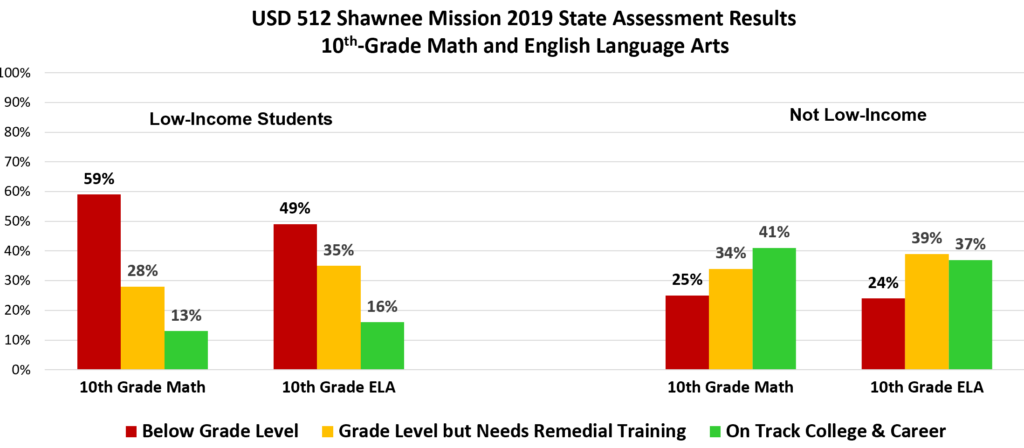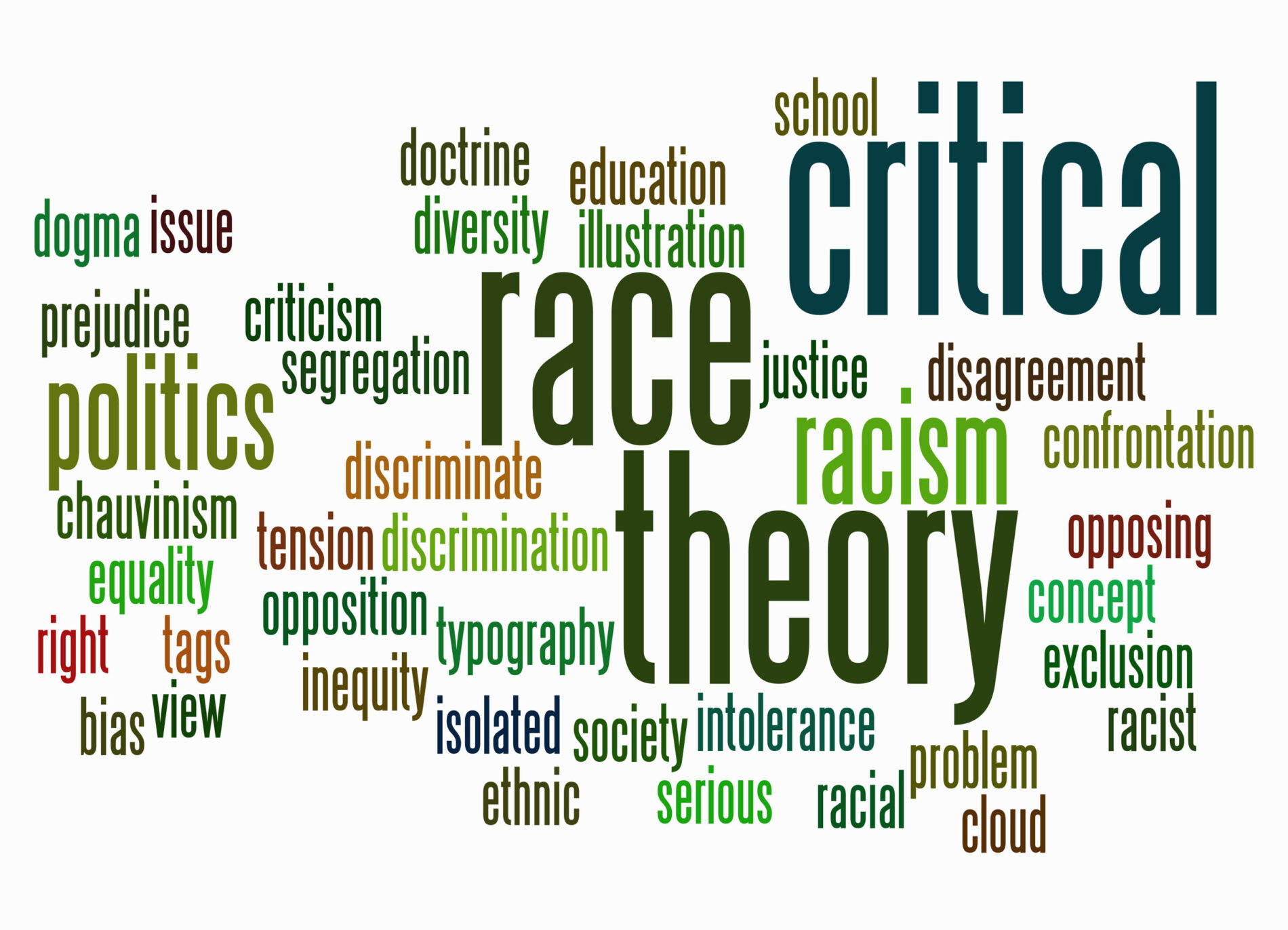The Shawnee Mission School District (SMSD) is part of the education lobby that is attacking opportunity for students who are financially and academically at-risk, opposing every measure that would allow students trapped in low-performing public schools to seek opportunities elsewhere. Their objection is centered on the possibility of losing a bit of money. However, they cannot offer evidence that low-income students perform better in public schools, because state assessment results show private schools have superior results.
Superintendent Mike Fulton even made a false claim in legislative testimony, saying that expanding eligibility for the tax credit scholarship program “will funnel public dollars primarily to families who already are availing themselves of private school options.” But Fulton knows that existing eligibility guidelines require new applicants to be enrolled in a public school, and the expansion proposal does not change that.
Following the district’s vocal opposition to opportunity for low-income students, the Sentinel posed two questions to the school board:
- Please explain the district’s plan to get these kids at least to grade level.
- Please also explain how long the board thinks it will take to get all low-income kids to grade level.
Their reply gives Kansans a window into the plight of the majority of students who are not being prepared for college and career by the Kansas public school system, including tens of thousands who are below grade level.
Haughty reply avoids plight of low-income students
Shawnee Mission responded through Communications Officer David Smith. His email opened by saying the goal is not grade level, but college and career readiness. Laudatory as that may be, school attorneys and the Kansas Supreme Court have made achieving grade level as the proxy for ‘proving’ schools are adequately funded.
In Gannon, the Court absurdly used teenager logic to justify ordering another massive school funding increase, saying that having at least 25% of students statewide below grade level somehow proved schools don’t have enough money. But with no accountability for spending money so that kids can achieve grade level, districts spend however they wish; and with no accountability for improving achievement, the majority of low-income students and a scary number of their more affluent peers are allowed to languish below grade level.
The district’s haughty reply inadvertently undermined the absurd logic of the Court’s funding order.
“Getting all children to grade level…has never happened in a system that serves all children. Unlike private schools, public schools willingly serve all students who enter their doors, including students with disabilities, English language learners, and students who enter our classrooms significantly behind their peers. No institution that serves all students can guarantee that every student will be at a specific measure of achievement at a specific time.”
So much for the claim that gobs more funding is all that’s needed for the Kansas Supreme Court’s mandate “…to have all Kansas public education students meet or exceed” the Rose standards of education capacities, which the Court equates to grade level on the state assessment test.[i]
Finally, a school board admits that the Court’s basis for adequate funding cannot be met.
The 2019 state assessment shows Shawnee Mission is failing its stated goal of college and career readiness for all students. There are over four times as many low-income students below grade level in the 10th grade than are on track for college and career (59% vs. 13%), and three times more below grade level in English Language Arts (49% vs. 16%).

A quarter of 10th-graders who are not low income are below grade level in both subjects; another third or more are at grade level but still need remedial training (34% and 39%, respectively), and less than half are on track for college and career (41% and 37%, respectively).
Results for both student cohorts are worse in both subjects than in 2015.
Strategic plan focuses on activity and virtue, not achievement
Shawnee Mission says its 2019-24 Strategic Plan is designed to prepare students for college and career. It is riddled with virtue-signaling and attention on school staff, but it falls woefully short of critical elements needed to move students from below grade level to being prepared for college and career.
No reference to the previous plan – An opening note from Superintendent Fulton says the plan “builds upon the previous five-year strategic plan” but there otherwise is no reference to the previous plan. There should be a record of what worked and how success was measured, what didn’t work, and many other issues to set the stage for the development of a new plan.
No mention of challenges and problems – Identifying the problem or problems to be resolved is central to developing a strategic plan, but the SMSD strategic plan doesn’t even allude to any issues or challenges, and that’s likely by design. Shawnee Mission (along with the State Board of Education and other members of the education lobby) goes out of its way to avoid accountability; if they could, they would do away with state assessments and other achievement measurements.
David Smith makes this clear in his email.
“The current state assessment system does not capture growth towards college and career readiness. In addition, as you know, state assessments have little or no meaning for the student who has to take them.”
To be sure, the state assessment does capture growth toward college and career readiness, and it shows Shawnee Mission and all other districts fall far short of the goal. So, predictably, they try to discredit the measurement (except when it suits their purpose of suing taxpayers for more money, naturally).
SMSD ‘beliefs’ barely mention students – Fulton says the plan is built on a series of beliefs, which almost exclusively signal the virtues of the adults who assembled the plan. Here are the first three:
- “Every individual has inherent worth and deserves to be valued and celebrated.”
- “A community’s strength is derived from its diversity.”
- “Respecting a community’s diversity and each individual’s dignity demands equitable access.”
One might think a school district would base a strategic plan on beliefs about every student having the capability to learn and focusing resources with that in mind, but one would be wrong.
SMSD doesn’t believe in their stated objectives – Each of the three listed objectives refers to ‘every student,’ including, “Every student will achieve academic success through a challenging, relevant (sic) personalized learning plan.” But when the Sentinel pressed board members to explain how they would get all students to grade level, they said that isn’t possible.
Strategies emphasize equity and funding fancy buildings – The five listed strategies emphasize what’s most important to the adults in the system, including a “unified, equitable, and inclusive culture.” Resources will be focused on “state-of-the-art facilities” to accomplish the adults’ beliefs and objectives.
Strategies to ensure every student acquires a year’s worth of learning each year, to close achievement gaps for low-income kids and students of color, or to spend resources on student needs are glaringly absent.
Attacks on opportunity disregard achievement crisis
Rep. Valdenia Winn, a Wyandotte County Democrat, recently said in a legislative hearing, “The COVID pulled the scab off the systemic problems that were there.” She was referring to longstanding underachievement for many students that media and the education community refuse to acknowledge.
The education lobby professes everything “is about the kids.” Their actions, however, prove otherwise.
Attacks on opportunities for students who are financially and academically at risk in general, and the Shawnee Mission Strategic Plan in particular, demonstrate that it is really about money and the adults in the system.
_________________________
[i] Gannon v. State of Kansas, March 2014, page 76.



